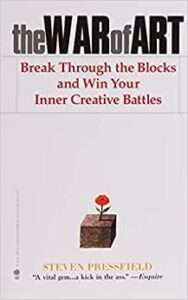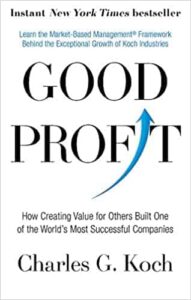Introduction
It is often thought that in order to get big results in life and become successful it requires big and drastic actions. This book explain why this is not the case and instead talks about why the opposite is true. Real and sustainable success comes from small actions repeated over a long period of time. With the same habits, we end up with same results but with better habits anything is possible. Changes that seem small and unimportant at first will compound into big results if we can stick with them for years.
This book explains how to develop good habits, how to make them stick and why good habits are important if we want to live a fulfilling life. The quality of our lives is correlated to the quality of our habits.
Chapter 1 – The Surprising Power of Atomic Habits
- Small habits compound over time, this applies to both positive and negative habits.
- Aim to become 1% better every day. Making a choice that is 1% better or worse may seem insignificant in that moment but small improvements or errors is going to have a huge effect in the long run.
- Success is the product of daily habit, not once-in-a-lifetime transformations.
- You should be more concerned with your current trajectory than with your current results.
- People put off happiness when setting goals because of goal-first mentality. The thought process is “Once I reach my goal I will be happy”. The problem with this is that it creates an either-or, either you succeed and become happy or fail and become disappointed. Most of the time there will also be another goal right after.
- A better approach is a system-first mentality. When you love the process instead of the product you give yourself permission to be happy. You can be happy anytime you are in the process and the system is running. The system is basically the combination of all your daily habits.
- If you’re having trouble changing your habits, the problem isn’t you. The problem is your system.
- At the end of the day, it is your commitment to the process that will determine your progress.”
- You do not rise to the level of your goals. You fall to the level of your systems.
- If you want better results, then forget about setting goals. Focus on your system instead.
- Success is not a goal or destination. It is a system to continuously improve and refine.
- Your outcomes are a lagging measure of your habits. Your net worth is a lagging measure of your financial habits. Your weight is a lagging measure of your eating habits. Your knowledge is a lagging measure of your learning habits.
- We often think and hope that progress is linear but the results of our effort is often delayed. It can take months or years before we realise the result of our previous work. Real transformation is a slow process.

Chapter 2 – How Your Habits Shape Your Identity (and Vice Versa)
- Many people begin the process of changing their habits by focusing on what they want to achieve. A better approach is to instead focus on what kind of person you want to become.
- You want to change you identity for example: the goal is not to read a book, the goal is to become a reader or the goal is not to cook one good meal, the goal is to become a better chef.
- It is a two-step process: Decide the type of person you want to be. Prove it to yourself by doing things such a person would do.
- Each time you read a page you are a reader.
- Each time you exercise you are an athlete or healthy person.
- If you for example want to become more healthy and don’t know what to do then as ask yourself for example “what would a healthy person do?” or “would a healthy person do this?”.
- Habits are not about having something but it is instead about becoming someone. You identity emerges out of your habits.
- Becoming the best version of yourself requires you to continuously edit your beliefs, and to upgrade and expand your identity.
- The real reason habits matter is not because they can get you better results (although they can do that), but because they can change your beliefs about yourself.
Chapter 3: How to Build Better Habits in 4 Simple Steps
- A habit is a memory of steps in order to solve a problem. The main reason why the brain stores memories is to better know how to predict the future.
- The purpose of habits is to solve problems with as little energy as possible.
- A habit can be divided in to four steps cue, craving, response, and reward. For a habit to stick all four steps are important.
- Cue – this is what triggers us to start doing something.
- Craving – this is the motivation force or reason why you want to do something. Without a craving we won’t perform the habit. Most of the time we don’t crave the habit itself but the reward and change in state it give gives. You don’t crave a cigarette, you crave the feeling of relief it gives. You don’t crave watching checking you phone, you are bored and the craving is to be entertained.
- Routine – this is the habit / actions that you perform.
- Reward – this is the reward and solves the craving. We seek rewards because they satisfy us and teach us.
- If any of the four steps are insufficient it will not become a habit.
- No cue = behaviour will not start
- No craving = no motivation to do it
- Routine too difficult = you won’t be able to do it
- Reward not good enough = no reason to do it.
- How to create a good habit?
- The 1st law (Cue): Make it obvious.
- The 2nd law (Craving): Make it attractive.
- The 3rd law (Response): Make it easy.
- The 4th law (Reward): Make it satisfying.
- Four questions to ask yourself when forming a habit: How can I make it obvious?, How can I make it attractive? How can I make it easy? How can I make it satisfying?
- How to Break a Bad Habit?
- Inversion of the 1st law (Cue): Make it invisible.
- Inversion of the 2nd law (Craving): Make it unattractive.
- Inversion of the 3rd law (Response): Make it difficult.
- Inversion of the 4th law (Reward): Make it unsatisfying.
Chapter 4: The Man Who Didn’t Look Right
- The process of behaviour change always starts with awareness. You need to be aware of your habits before you can change them.
Chapter 5: The Best Way to Start a New Habit
- The two most common cues are time and location. So a way to start a habit is to pair a new habit with a specific time and location or just either one of them.
- The formula is: I will [BEHAVIOUR] at [TIME] in [LOCATION].
- For example: I will read at 10 pages at 21:00 in the kitchen.
- We often decide what to do next based on what we just finished. This is where we can use habit stacking.
- The habit stacking formula is: After [CURRENT HABIT], I will [NEW HABIT].
- For example: After eating breakfast I will do my dishes.
- Habit stacking is used to pair a new habit with a current habit.
Chapter 6: Motivation is Overrated; Environment Often Matters More
- Since humans rely so much on our vision the environment we are in often affect our behaviour since it is filled with cues that makes us act in certain ways.
- Make the cues of good habits obvious and remove the cues that trigger bad behaviour in your environment.
- It is easier to build new habits in a new environment because you are not fighting against old cues.
Chapter 7: The Secret to Self-Control
- If we want to break a bad habit the most reliable way is to remove it at its source. This is done by removing exposure to the cue that causes it.
- For example: if you feel like you are wasting too much time on social media then delete the apps or make it more difficult to access them.
- Self-control is a short-term strategy, not a long-term one.
Chapter 8: How to Make a Habit Irresistible
- Habits are a dopamine-driven feedback loop. When dopamine rises, so does our motivation to act
- Dopamine is released in our brain when we are expecting a reward. Dopamine is what makes us feel pleasure and feeling good in general.
- Whenever we predict that we will get a reward our dopamine level rises.
- We need to make our habits attractive because it is the expectation of the reward that makes us take action.
- Temptation bundling is one way to make your habits more attractive. The strategy is to pair an action you want to do with an action you need to do.
- The habit stacking + temptation bundling formula is:
- After [CURRENT HABIT], I will [HABIT I NEED].
- After [HABIT I NEED], I will [HABIT I WANT].
- For example: When I get home I will work for 1h (need), after working I will watch a video (want).
Chapter 9: The Role of Family and Friends in Shaping Your Habits
- The people we spend time with determines what habits and behaviours are attractive to us.
- A good way to build better habits is to join a culture and spend time around people where your desired behaviour is the normal behaviour and you already have something in common with the group.
- For example if you are surrounded by fit people you are more likely going to take care of your health. Or if you surround yourself with people who spend all day on social media then you are more likely to do so.
Chapter 10: How to Find and Fix The Cause of Your Bad Habits
- Think about the benefits of avoiding a bad habit to make it seem unattractive or how the future you is going to thank you.
- If you have something that has to be done but you don’t wanna do it then change the language and frame of habits to make them positive. Switch “have” to “get” and it becomes gratitude practise.
- I have to exercise becomes I get to exercise. I have to go to to office and do my work becomes I get to go to the office and do my work.
Chapter 11: Walk Slowly, But Never Backward
- It’s important to have a solid plan but at the end of the day it all comes down to taking action.
- Focus on taking action not being in motion.
- Being in motion means planning and learning but these things don’t produce any results. Action is activities that give results and an outcome.
- For example: reading a book on health is motion and eating healthy and exercising is action.
- It is common to get stuck in motion because it feels like we are making progress but we are most of the time only fooling ourselves here.
- Motion is tempting because the risk of failure is small.
- The most effective form of learning and developing new habit is practice, not planning.
- Habits are formed based on repetition and frequency, not time.
Chapter 12: The Law of Least Effort
- Humans will do the thing that gives the most value for the least amount of effort.
- Create an environment where doing the right thing and performing good habits is as easy as possible.
- Create an environment where doing wrongs thing are as difficult as possible.
Chapter 13: How to Stop Procrastinating by Using the Two-Minute Rule
- The two minute rule says: when you start a new habit, it should take less than two minutes to do.
- The most important thing is to show up every time. First establish the new habit then refine it.
Chapter 14: How to Make Good Habits Inevitable and Bad Habits Impossible
- The best and easiest way to break a bad habit is to make it impractical to do. Make it so difficult so that it is not worth performing the bad habit.
- Automate as much of as possible especially the things that are important and requires attention.
Chapter 15: The Cardinal Rule of Behavior Change
- We are likely to repeat a behaviour if the experience is satisfying.
- The human brain evolved to prioritise immediate rewards over delayed rewards.
- The Cardinal Rule of Behaviour Change: What is immediately rewarded is repeated. What is immediately punished is avoided.
Chapter 16: How to Stick with Good Habits Every Day
- One of the most satisfying feelings is making progress and improving.
- Track you behaviour with a calendar and make it clear that you are making progress, for example mark the days when you have succeeded so you get a streak. Try to keep the streak alive.
- Never miss twice. If you miss on day make it a priority that you do it the next day.
Chapter 17: How an Accountability Partner Changes Everything
- Find an accountability partner that can help you keep track of you habits and if you fail to perform the habits then decide on a punishment.
- The reason why this works is because we care a lot about other peoples opinions and don’t want them looking down on us.
Chapter 18: The Truth About Talent (When Genes Matter and When They Don’t)
- To maximise your chance of success it is important to choose the right field of competition.
- Some questions to ask yourself:
- What feels like work to me but work for others?
- What makes me lose track of time?
- Where do I get greater returns the average person?
- What comes naturally to me?
- Experiment and test many things first and see what suits you and when you find something, develop habits around it.
Chapter 19: The Goldilocks Rule—How to Stay Motivated in Life and Work
- Once an habits has been established it is important to keep improving or challenging yourself.
- The Goldilocks Rule says that humans experience peak motivation when working on tasks that are right on the edge of their current abilities. When working on these tasks it is easier to enter a flow state which is that you are fully focused on the task in front of you.
- The greatest threat to success and sticking with habits is not failure but boredom.
- Humans seek novelty and even if something is working fine we want to change it because we get bored.
- Professionals stick to the schedule and their habits while amateurs make excuses and let life get in the way.
- Anyone can work hard when they are inspired and motivated but it is the ability to show up on the days we don’t feel like doing it that’s gonna separate the people who succeed and those who don’t.
Chapter 20: The Downside of Creating Good Habits
- Once a habit is formed it is important to continue pay attention so that it does not become mindless repetition. Some traps are you let small errors slide and think you are improving because you are gaining experience.
- The formula for mastery is: habits + deliberate practise = mastery
- Reflection and review and then refine.





